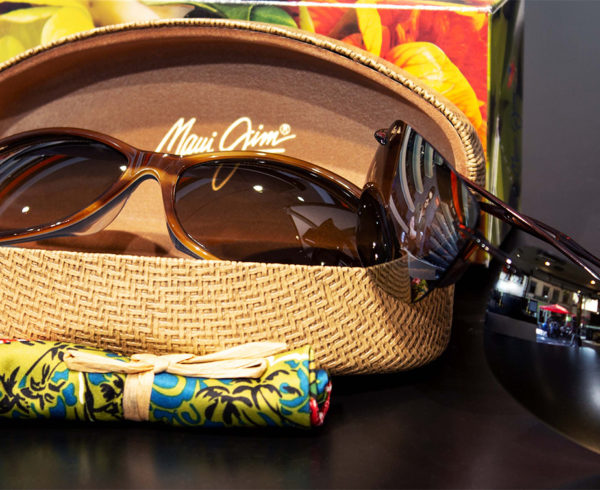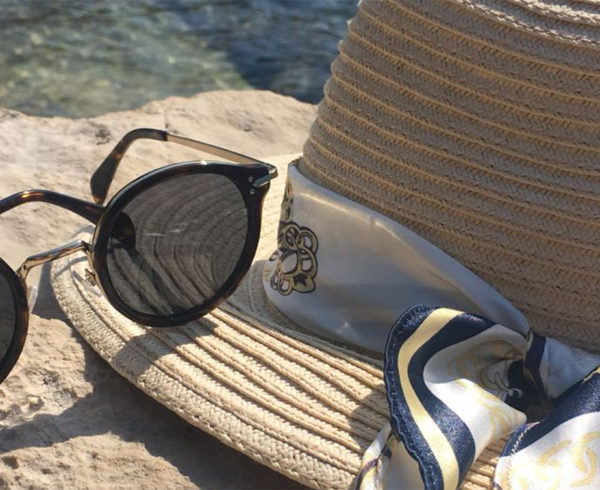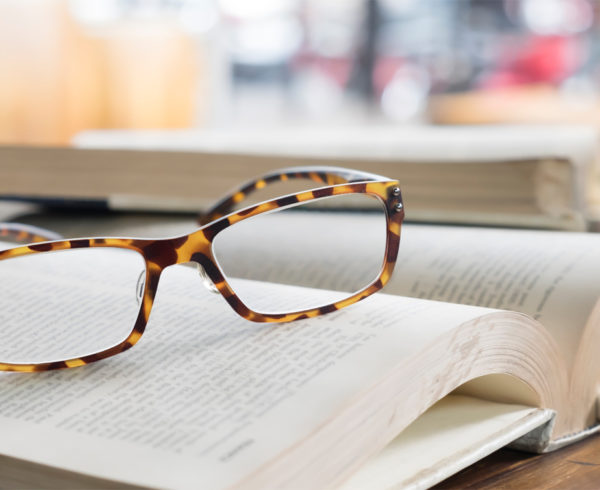In the second part of our optician vocabulary, we explain in more detail which types of refractive errors exist, which glass coating stands for which effect and what are self-tinting lenses.
Defective Vision:
The term ametropia combines several forms of abnormal refractive eye conditions, such as myopia, hyperopia, night blindness or colour vision deficiency. To be able to see clearly, all components of the eye, consisting of the cornea, the chamber of the eye filled with aqueous humor, the iris, pupil, lens and retina, as well as the liquid-filled vitreous, have to function perfectly. If this is not the case, visual disturbances are the result.
Myopia:
Nearsightedness is defective vision, when one can no longer see things that are farther away. It usually develops slowly and unnoticed. Mild myopia with less than 0.5 dioptre is considered normal. For all values that go beyond this, it is advisable to get a visual aid in the form of glasses or contact lenses.
Hyperopia:
Farsightedness is defined as defective vision when one can no longer see things nearby sharply, but only blurred. Farsightedness usually develops during growth and can be genetically determined. Another form of farsightedness is presbyopia, which becomes noticeable from the age of 35.
Visual Acuity:
Visual acuity indicates the ability to see sharply. Good vision is by no means a matter of course. To determine the visual acuity, it is recommended to have an eye test done by an optician or ophthalmologist. If someone is suffering from ametropia, the exact correction values must be determined to ensure the perfect lenses for perfect sight. The optician must therefore know the respective individual vision and the deviation from the ideal values.
Accommodation:
The ability of the eye lens to automatically adjust to different distances is called accommodation. The eye adapts dynamically to the refractive power so that objects can be seen sharply at different distances. Responsible for this accommodating ability is the flexible eye lens that can change its shape through muscle power. The ciliary muscle is a ring of smooth muscle in the eye’s middle layer. It is ring-shaped and holds the eye lens over the lentil-suspensory-ribbons. When focusing on objects at different distances, the lens deforms due to the tension of the ciliary muscles and the resulting loosening of the lentil-suspensory-ribbons. This causes the lens to deform and take on a spherical shape. This is the prerequisite for focusing things nearby (near-accommodation). The accommodating ability deteriorates with age as the eye lens solidifies. Objects in the vicinity are no longer sharply perceived, which is part of the natural aging process. This condition is called presbyopia or farsightedness
Prescription Card:
If you want to get new glasses, you must be aware of many values, which are determined in the context of an eye test at an optician or ophthalmologist. The determined values are registered with the optician on a prescription card or by an ophthalmologist in the so-called eyeglasses prescription. As defective vision may differ in the values between the left and the right eye, the data and values on the prescription card are divided into the right and left eyes.
Dioptre:
The dioptre is a unit of measurement used to describe how much a spectacle lens must break the light to correct a refractive error. Or to put it more simply: the strength of the lenses is given in dioptres. The dioptre values are entered on the prescription card, which you receive from your ophthalmologist or optician if you have defective vision. Positive dioptre values stand for hyperopia and negative dioptre values for myopia.
Pupillary distance:
The pupillary distance is the distance from the centre of the pupil (the black spot in the eye) of one eye to the other. As the pupils are often not symmetrical to each other, both the left and right pupil distances are measured separately from the nasal center to the respective pupil. The sum of both measured values gives the total pupil distance.
UV protection:
UV stands for the invisible ultraviolet radiation, which affects the eyes in all weathers and can permanently damage the eyes. With UV protection 400 on the lenses, the wavelengths below 400nm are blocked.
Antireflection:
To minimize disturbing light reflections, an antireflective coating is applied to the base glass of the spectacle lenses. This special coating can be applied both outside and inside.
Lotus Coating:
The leaves of lotus plants have a natural biological coating that simply allows water drops to form in “pearls”, causing dirt to run off. This dirt-repellent surface coating of the lenses is, therefore, also called Lotus coating, which gives the lotus effect.
Self-Tinting Lenses:
Glasses with self-tinting lenses are glasses for all lighting conditions. Whether indoors or outdoors, in brightness or darkness – the lenses quickly adjust to the respective lighting conditions, relieving the eyes. An advantage of the self-tinting or even photochromic lenses is that glasses do not have to be changed in different lighting conditions. In the case of incident solar radiation, the glasses automatically change colour, while in weakening sunlight, the glasses become brighter again.
 English
English Deutsch
Deutsch Dansk
Dansk Svenska
Svenska Nederlands
Nederlands Français
Français Magyar
Magyar polski
polski Română
Română Österreich
Österreich Schweiz
Schweiz





Leave a Comment